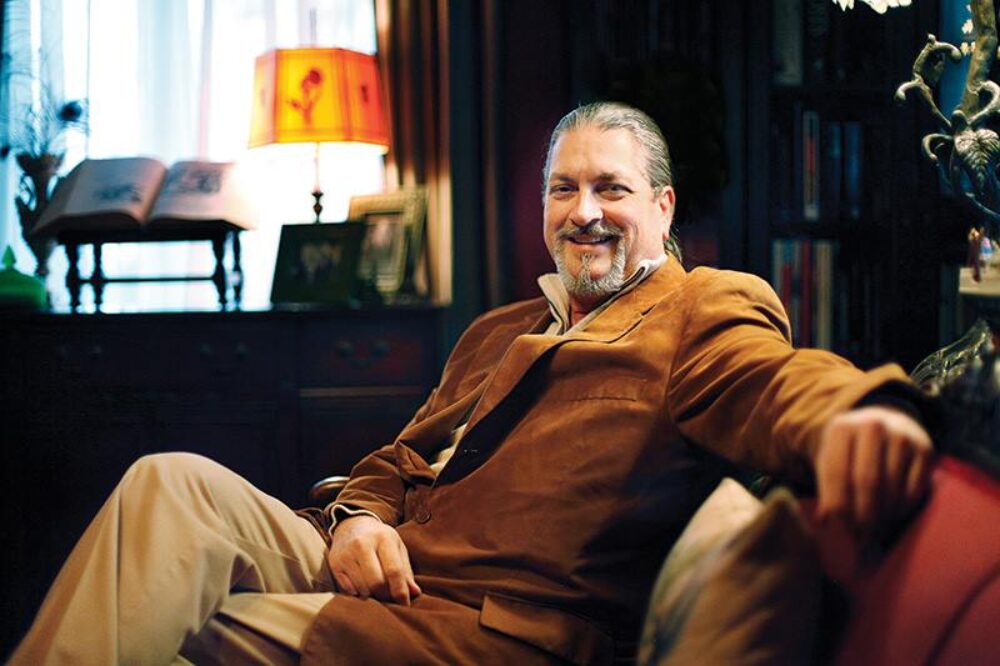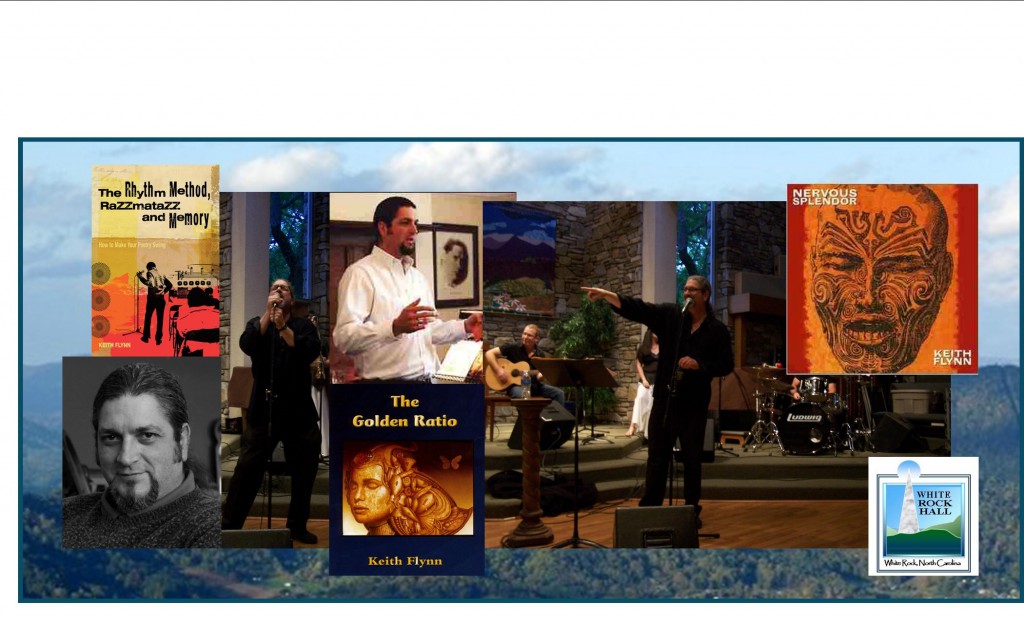Never a dull moment with Flynn on stage, the poet/singer/lyricist has always brought to his speeches and lectures a set of diverse and unique strategies that seamlessly form connections between tradition and the avant-garde, history and philosophy, pop culture and the widening literary canon.
Poet, editor, and professor, Marilyn Kallet, who directs the Writing Programs at University of Tennessee, Knoxville, says that Flynn’s latest volume, The Rhythm Method: Razzmatazz and Memory, “is a godsend for poets at all levels–beginners, master poets, and everyone in between. The author speaks directly to the reader, as a fellow lover of poetry. And so the book reads like the true companion to poetry we’ve always wanted. Not stiff-necked, not dryly academic, this work is wise and thoroughly well read. Keith Flynn takes us from Guilhem d’Aquitane to the Delta blues and beyond. He knows his stuff, and the end of our journey together, so do we. I wish I’d had this book a long time ago, but I’m thrilled to have it now.”
Patrick Bizzaro, who is director of the University Writing Programs for East Carolina University, agrees with Kallet, and says that “Poet and master teacher Keith Flynn, almost without the intention of doing so, has modeled in this book how to write excellently about music, a boon for an increasing number of creative writers these days who are committed not only to their creative work, but to the ways expository writing makes students better learners when they write in and about the subjects they study. Flynn’s expository prose is beautiful, rhythmic; it achieves the high ideals we should hold for ourselves as teachers and writers and successfully employs the very tools our students will learn to use best once they have read and modeled their writing after what they find in these pages. I highly recommend this book as a text for a creative writing or literature course, but will also recommend it to teachers of writing-intensive courses at my university, which stresses writing about music.”
Here is a sampling of the outlines from recent lectures by Keith Flynn:
THE RHYTHM METHOD: Admitting no impediment.
What separates poetry from other writing disciplines is its music. This exploration will focus on line structure and the aspects of language that help create inventive rhythm and flow. With an emphasis on editing, the discussion will include examples of the power of the action verb, why imagination is more important than knowledge, and exercises designed to make the poems more dynamic and muscular on the page. Since the human body is largely comprised of water, this chapter will show how we as rhythmic beings assimilate language through rhythm, and how to use the understanding of rhythm and music to jumpstart the creative process. Part of the discussion will deal with the pragmatic process of getting your work published and what an editor is looking for when choosing a poem.
RAZZMATAZZ AND SOUL: Poetry and the sources of inspiration.
This lecture will include exercises on image association, how to improve the eye as well as the ear, and discussions about the history of Surrealism and its influences on contemporary culture. We will trace the beginnings of surrealist artists and activities from Baudelaire’s Paris to the confluence of artists such as Apollinaire, Breton, Picasso and Dali at the beginning of the 20th century in Europe, to the advent of magical realism in the contemporary novel, and the impact Spanish surrealism and duende have had on western poets and culture. This presentation will also isolate the effect of decisive biographical moments in the creative life and how these events may define a poet’s voice and ideology.
THE LONG BLUE LINE: The synthesis of song and the poem.
This discussion illustrates the chronology of music and poetry as kissing cousins, from the time of Beowulf and The Canterbury Tales, when the poems of the time were preserved and passed along by being sung. From the French troubadours and onto the history of the rock poet in America, we’ll also look at the influences of blues and jazz on contemporary poetry. Part of the talk will illustrate how the basic principles of songwriting and structure, melody and tempo, can help create flow and dynamism for the poetic process. The Beat poets and their spoken-word experiments will be discussed, as well as the lyrics of Robert Johnson, Willie Dixon, Bob Dylan, Leonard Cohen, and the advent of slam poetry and hip hop culture as influences.
NAMING THE WILDERNESS: Composing from a sense of place.
This discussion will concentrate on descriptive language and defining your work from the perspective of geography and community. The work of the Wright Brothers (James and Charles), Levis, Niedecker, Hass, and Levine will help us define the poet as spokesman for the places they live and instinctive defenders of the natural world. There is much discussion in university curriculums about place-based creation and how the role of the poet as outsider and political lightning rod is directly a result of the places they live and write. This overview will examine how the environment surrounding the writer creates the inner dialogue that defines his or her work, from Frost and Whitman, to Merton, Snyder, Bishop, and Stafford.

